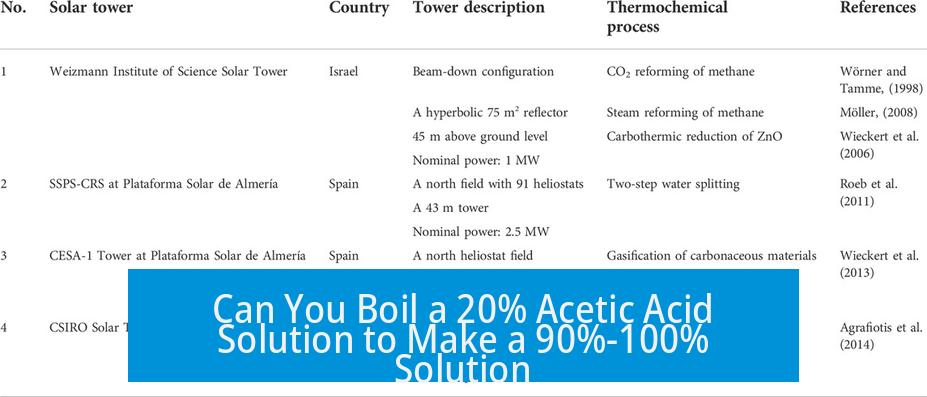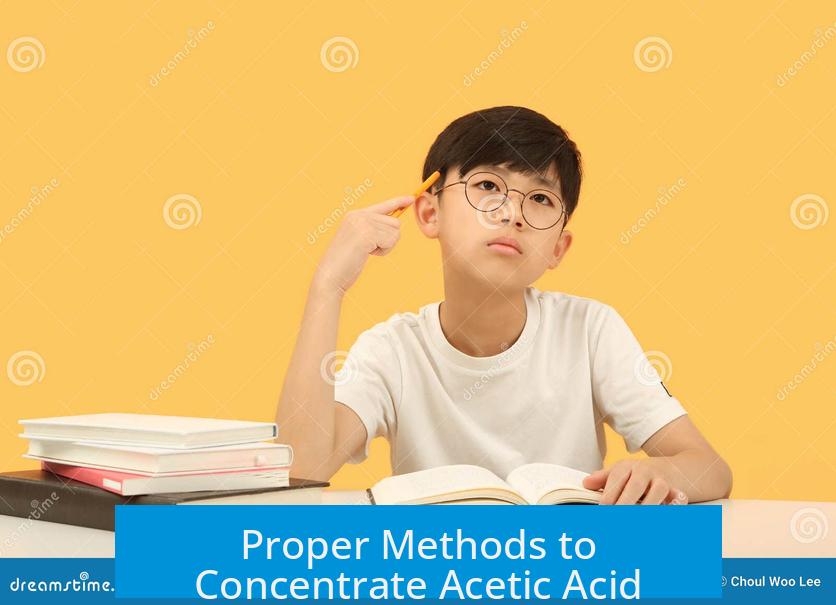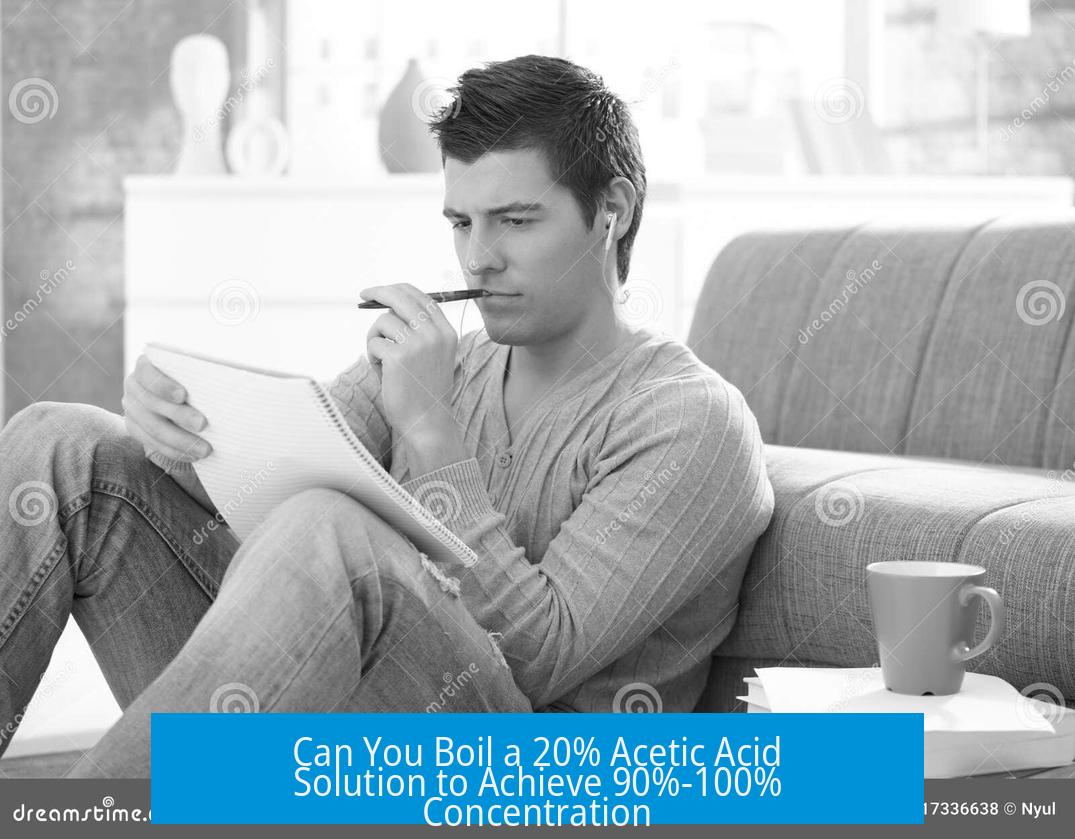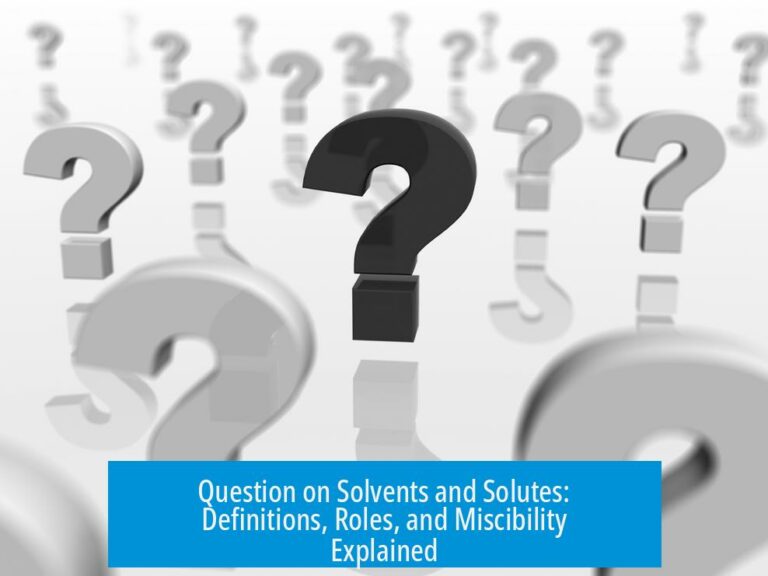Can You Boil a 20% Acetic Acid Solution to Make a 90%-100% Solution?

Boiling a 20% acetic acid solution to get a 90%-100% concentration is not effective. The boiling points of acetic acid and water are very close, making simple boiling an inadequate method for this level of concentration without specialized equipment.
Why Boiling Alone Does Not Work
- Acetic acid boils at about 118°C, while water boils at 100°C.
- In a 20% acetic acid solution, these close boiling points prevent simple separation by boiling.
- Without fractional distillation, the vapor will contain both water and acetic acid, so concentration does not significantly increase.
Proper Methods to Concentrate Acetic Acid

Direct boiling is replaced by chemical conversion and fractional distillation for safer and efficient concentration:
- Convert acetic acid to sodium acetate by reacting with sodium bicarbonate.
- Boil the mixture to evaporate water, leaving hydrated sodium acetate.
- Dry the sodium acetate by heating to remove moisture completely.
- React dry sodium acetate with sulfuric acid to regenerate acetic acid and produce sodium sulfate.
- Distill the mixture; acetic acid will vaporize due to its lower boiling point, leaving sulfuric acid behind.
This sequence produces concentrated acetic acid with much higher purity.
Safety Considerations
- Concentrated acetic acid causes severe burns despite being a weak acid.
- Heating acetic acid presents fire hazards because it is flammable.
- Handling sulfuric acid in the regeneration step requires careful safety measures due to its corrosive nature.
- Use proper protective equipment and work in a well-ventilated area or fume hood.
Summary
Simply boiling a 20% acetic acid solution will not produce concentrated acetic acid near 90%-100%. Advanced methods involving chemical conversion and fractional distillation are necessary. Given the hazards involved, such procedures demand care and proper laboratory conditions.
Key Takeaways
- Simple boiling cannot effectively concentrate acetic acid from dilute solutions.
- Conversion of acetic acid to sodium acetate followed by regeneration and distillation is a viable approach.
- Concentrated acetic acid and its processing require strict safety precautions.
- Fractional distillation, not simple boiling, separates acetic acid from water efficiently.
Can I boil a 20% acetic acid solution to concentrate it to 90%-100%?
No, boiling is ineffective because the boiling points of acetic acid and water are too close. Without a fractional distillation column, they won’t separate properly.
What is the proper way to obtain concentrated acetic acid from a dilute solution?
Convert acetic acid to sodium acetate using sodium bicarbonate. Then boil off water, dry sodium acetate, react it with sulfuric acid, and finally distill the acetic acid to get a concentrated solution.
Why can’t I just evaporate the water by boiling a 20% acetic acid solution?
Simple boiling causes both water and acetic acid to evaporate together. Their similar boiling points prevent effective separation without specialized equipment.
Is concentrated acetic acid dangerous to handle during concentration?
Yes. Concentrated acetic acid can cause severe burns and is flammable when heated. Handle with care and avoid direct boiling without proper safety measures.
Why is direct boiling not recommended despite acetic acid being a weak acid?
Although it’s a weak acid, concentrated acetic acid can burn skin badly and pose fire hazards when heated. Weak acidity doesn’t mean low hazard in this case.





Leave a Comment